Crosstalk between the HIF-1 and Toll-like receptor/nuclear factor-κB pathways in the oral squamous cell carcinoma microenvironment
- PMID: 27191981
- PMCID: PMC5122348
- DOI: 10.18632/oncotarget.9329
Crosstalk between the HIF-1 and Toll-like receptor/nuclear factor-κB pathways in the oral squamous cell carcinoma microenvironment
Abstract
Hypoxia is a prominent feature of the microenvironment of solid tumors and may contribute to tumor progression through the oxygen-sensitive transcriptional regulator hypoxia-inducible factor-1 (HIF-1). Chronic inflammation is another typical feature. Inflammatory mediators, including Toll-like receptors (TLRs) and nuclear factor-κB (NF-κB), play an important role in cancer development. Recent studies have revealed extensive cross-talk between hypoxia and inflammation signaling, though the mechanisms remain unclear. Our results confirm that TLR3 and TLR4 are highly expressed in oral squamous cell carcinoma (OSCC). Activation of TLR3 and TLR4 stimulated the expression of HIF-1 through NF-κB. In addition, HIF-1 increased the expression of TLR3 and TLR4 through direct promoter binding. Thus, the TLR/NF-κB pathway forms a positive feedback loop with HIF-1. These results indicate a novel cross-talk between the TLR/NF-κB and HIF-1 signaling, which may contribute to OSCC initiation and progression. With the elucidation of this novel mechanism, it might serve as a basis for future microenvironment targeted cancer therapy.
Keywords: HIF-1; NF-κB; TLR; oral squamous cell carcinoma; tumor microenvironment.
Conflict of interest statement
None.
Figures

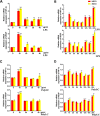
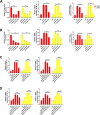

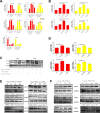

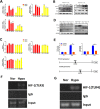
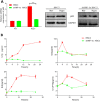
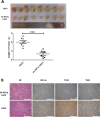

Similar articles
-
TLR4 Agonist and Hypoxia Synergistically Promote the Formation of TLR4/NF-κB/HIF-1α Loop in Human Epithelial Ovarian Cancer.Anal Cell Pathol (Amst). 2022 Apr 14;2022:4201262. doi: 10.1155/2022/4201262. eCollection 2022. Anal Cell Pathol (Amst). 2022. PMID: 35464826 Free PMC article.
-
Peroxiredoxin 1 stimulates endothelial cell expression of VEGF via TLR4 dependent activation of HIF-1α.PLoS One. 2012;7(11):e50394. doi: 10.1371/journal.pone.0050394. Epub 2012 Nov 21. PLoS One. 2012. PMID: 23185615 Free PMC article.
-
Involvement of TNFα-induced TLR4-NF-κB and TLR4-HIF-1α feed-forward loops in the regulation of inflammatory responses in glioma.J Mol Med (Berl). 2012 Jan;90(1):67-80. doi: 10.1007/s00109-011-0807-6. Epub 2011 Sep 2. J Mol Med (Berl). 2012. PMID: 21887505
-
Hypoxia-inducible factors in OSCC.Cancer Lett. 2011 Dec 26;313(1):1-8. doi: 10.1016/j.canlet.2011.08.017. Epub 2011 Aug 27. Cancer Lett. 2011. PMID: 21959110 Review.
-
Bridging hypoxia, inflammation and estrogen receptors in thyroid cancer progression.Biomed Pharmacother. 2014 Feb;68(1):1-5. doi: 10.1016/j.biopha.2013.10.013. Epub 2013 Nov 15. Biomed Pharmacother. 2014. PMID: 24286852 Review.
Cited by
-
The emerging role of oral microbiota in oral cancer initiation, progression and stemness.Front Immunol. 2023 Oct 26;14:1198269. doi: 10.3389/fimmu.2023.1198269. eCollection 2023. Front Immunol. 2023. PMID: 37954619 Free PMC article. Review.
-
Targeting Toll-Like Receptors for Cancer Therapy.Target Oncol. 2018 Oct;13(5):583-598. doi: 10.1007/s11523-018-0589-7. Target Oncol. 2018. PMID: 30229471
-
Could a Lower Toll-like Receptor (TLR) and NF-κB Activation Due to a Changed Charge Distribution in the Spike Protein Be the Reason for the Lower Pathogenicity of Omicron?Int J Mol Sci. 2022 May 25;23(11):5966. doi: 10.3390/ijms23115966. Int J Mol Sci. 2022. PMID: 35682644 Free PMC article. Review.
-
Therapeutic applications of toll-like receptors (TLRs) agonists in AML.Clin Transl Oncol. 2022 Dec;24(12):2319-2329. doi: 10.1007/s12094-022-02917-5. Epub 2022 Aug 13. Clin Transl Oncol. 2022. PMID: 35962918 Review.
-
Inhibiting reactive oxygen species-dependent autophagy enhanced baicalein-induced apoptosis in oral squamous cell carcinoma.J Nat Med. 2017 Apr;71(2):433-441. doi: 10.1007/s11418-017-1076-7. Epub 2017 Feb 7. J Nat Med. 2017. PMID: 28176233
References
MeSH terms
Substances
LinkOut - more resources
Full Text Sources
Other Literature Sources
Medical

